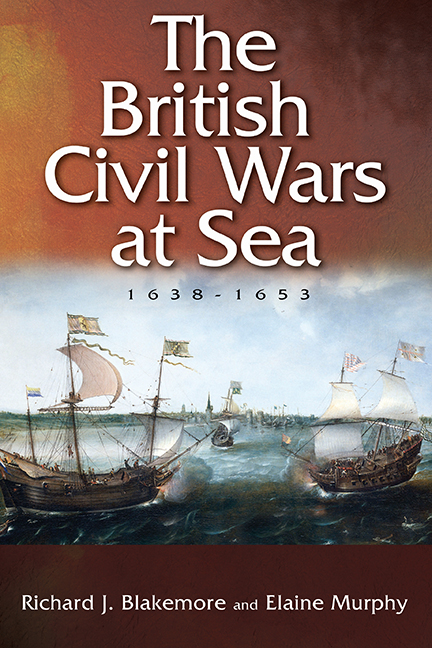Book contents
- Frontmatter
- Dedication
- Contents
- List of Illustrations
- Preface and Acknowledgements
- List of Abbreviations
- Map
- Introduction
- 1 Warfare at Sea in the Early Modern Period
- 2 The Outbreak of War, 1638–1642
- 3 The War at Sea, 1642–1646
- 4 Parliament's Navy, 1642–1646
- 5 Royalist, Confederate, and Scottish Naval Efforts, 1642–1653
- 6 Revolution, 1647–1649
- 7 Conquest, 1649–1653
- Conclusion
- Appendix 1 Timeline of the Civil Wars at Sea, 1638–1653
- Appendix 2 Parliamentarian Fleets, 1642–1649
- Bibliography
- General Index
- Index of Ships
6 - Revolution, 1647–1649
Published online by Cambridge University Press: 19 July 2019
- Frontmatter
- Dedication
- Contents
- List of Illustrations
- Preface and Acknowledgements
- List of Abbreviations
- Map
- Introduction
- 1 Warfare at Sea in the Early Modern Period
- 2 The Outbreak of War, 1638–1642
- 3 The War at Sea, 1642–1646
- 4 Parliament's Navy, 1642–1646
- 5 Royalist, Confederate, and Scottish Naval Efforts, 1642–1653
- 6 Revolution, 1647–1649
- 7 Conquest, 1649–1653
- Conclusion
- Appendix 1 Timeline of the Civil Wars at Sea, 1638–1653
- Appendix 2 Parliamentarian Fleets, 1642–1649
- Bibliography
- General Index
- Index of Ships
Summary
When the first civil war ended after Charles I's surrender to a Scottish covenanter army in May 1646, it left the three British kingdoms in an unresolved crisis. Parliament remained divided about what victory should bring, and communities throughout the British Isles suffered from war's economic and social scars. The majority in England appear to have desired a return to government by both king and parliament, and some kind of established church, though the form either of these should take was widely disputed. Presbyterians in Scotland and Catholics in Ireland continued to push (and in Ireland, fight) for their own religious settlement. During the following two years, as efforts towards a political compromise between parliament and the king foundered, and peace brought no relief from heavy taxes and harvest failure, dissatisfaction with the parliamentarian regime in England grew.
This eventually broke into fresh conflict in 1648, in a series of uprisings and the invasion of England by the Scottish Engager army, led by the royalist marquis of Hamilton. One of the most significant of these uprisings took place within the naval fleet stationed in the Downs. In May 1648 a substantial proportion of the fleet's sailors rejected their commander and expressed support for some kind of political accommodation with the king. This soon escalated into open warfare, as parliament prepared a new fleet to counter this threat, and the mutineers were pushed from forceful petitioning into outright royalism, accepting the leadership of the prince of Wales. This chapter will discuss these developments and their consequences during the second civil war, which resulted in victory for the more radical faction in parliament, leading to the execution of Charles I and the establishment of the Commonwealth.
Loyalty and sovereignty, January–April 1647
Although the conclusion of the first civil war brought an end to fighting on land in England and Scotland, warfare continued in Ireland and at sea. The navy achieved some success in their efforts to protect merchant shipping, providing convoys on major trade routes, and capturing a number of privateers.
- Type
- Chapter
- Information
- The British Civil Wars at Sea, 1638–1653 , pp. 129 - 153Publisher: Boydell & BrewerPrint publication year: 2018

